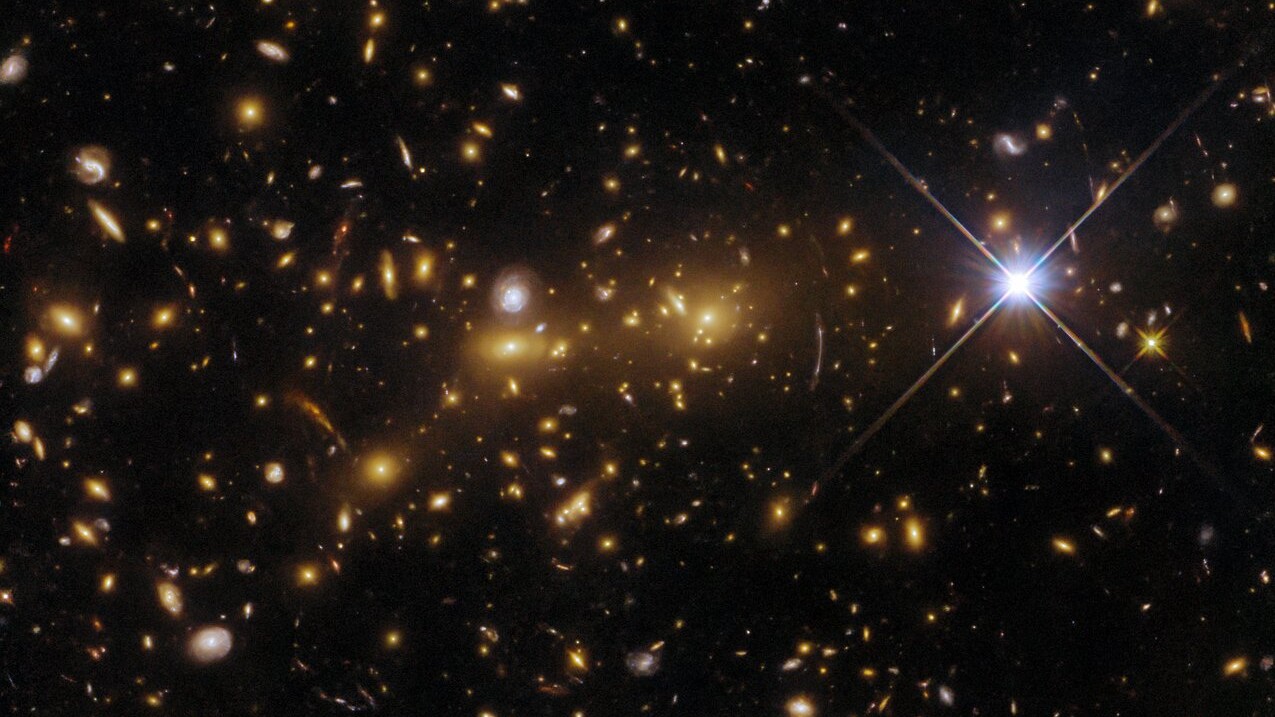
A "cosmic monster" is growing in a distant corner of the universe, and we just got a look at it.
The Hubble Space Telescope captured a stunning new view of a massive galaxy cluster called eMACS J1353.7+4329. This cluster lies about eight billion light-years from Earth in the constellation Canes Venatici. (For perspective, the farthest object ever observed lies 13.5 billion light-years from Earth.)
This galaxy cluster is "a monster in the making," consisting of at least two elliptical galaxy clusters in the process of merging together, according to a statement from the European Space Agency. (Hubble is a joint mission of NASA and ESA.)
Related: The best Hubble Space Telescope images of all time!
The cluster of galaxies is visible in the new Hubble image as a dense crowd of oval shapes. Each galaxy has a glowing orange halo around a bright core. Numerous other galaxies are sprinkled throughout the image, along with a bright star that exhibits a starburst effect, with four distinct diffraction spikes.
This cosmic monster of galaxy clusters acts as a gravitational lens, allowing researchers to study early galaxies in greater detail than they otherwise could. Gravitational lensing occurs when massive foreground objects, such as the merging galaxies, warp the fabric of space-time such that light from more distant objects is magnified or distorted.
"A celestial body such as a galaxy cluster is sufficiently massive to distort space-time, which causes the path of light around the object to be visibly bent as if by a vast lens," ESA officials said in the statement. "The first hints of gravitational lensing are already visible in this image as bright arcs, which mingle with the throng of galaxies in eMACS J1353.7+4329."
In the image, the effects of gravitational lensing can be seen to the right of the largest, central galaxy, which has stretched a background galaxy, causing it to appear as two connected, thin arcs.
The recent observations of eMACS J1353.7+4329 were taken at multiple wavelengths, using Hubble's Wide Field Camera 3 and Advanced Camera for Surveys. The data was collected as part of an initiative called "Monsters in the Making," which targets five exceptional galaxy clusters. Hubble's observations of these vast gravitational lenses lay the groundwork for studying such objects in even greater detail with NASA's James Webb Space Telescope, according to the ESA statement.







